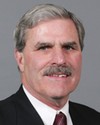Thank you for your question, sir.
As I mentioned in my introductory remarks, we do have an audit program that deals with the licensees. We monitor and audit the legal part of the business.
Basically, we have two parts to our audit program. In one part we go in and do full audits. Through our funding that we received through the tobacco compliance strategy in budget 2005, every licensee, on reserve and off reserve, receives a full audit once a year.
We also have what we call regulatory visits. We can visit in order to check on the inventory. We can be called and we will examine a container that is being loaded, and seal it prior to it being shipped. On average, every licensee will receive four visits per year.
To answer a previous question about what we do when we find the records on imports or purchases of tobacco do not match production, we raise assessments for the tax not paid.




